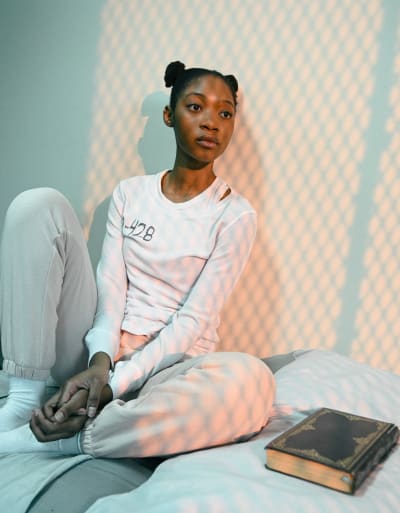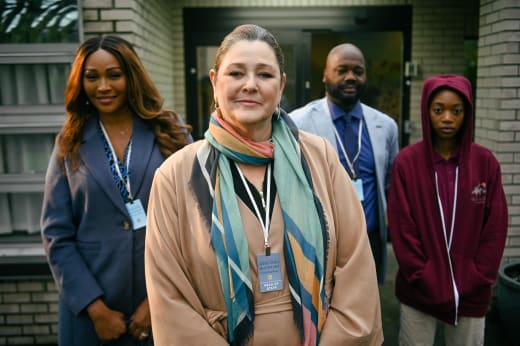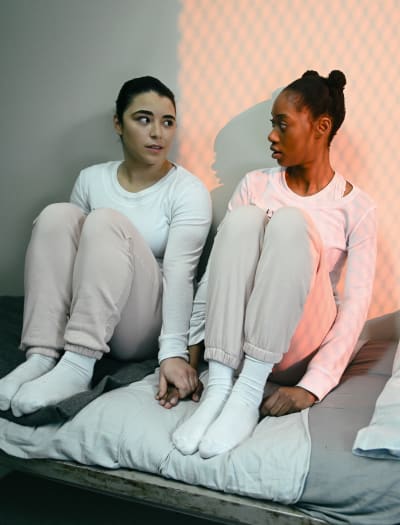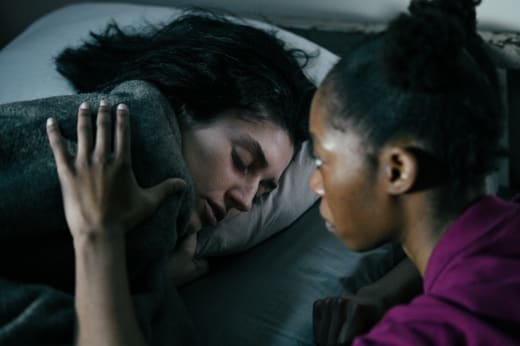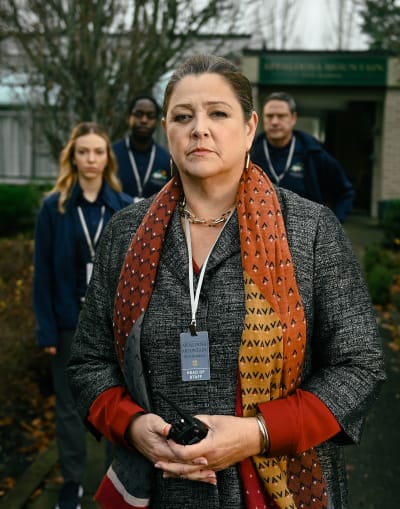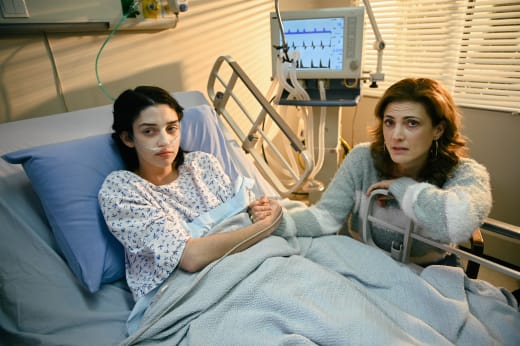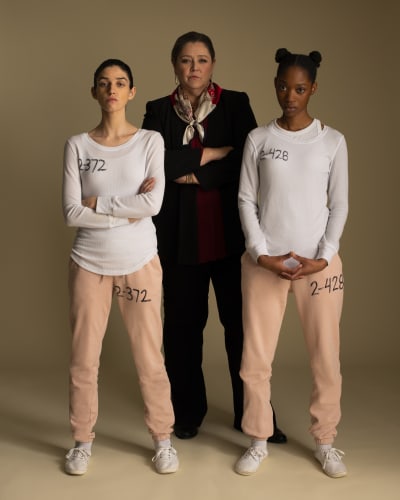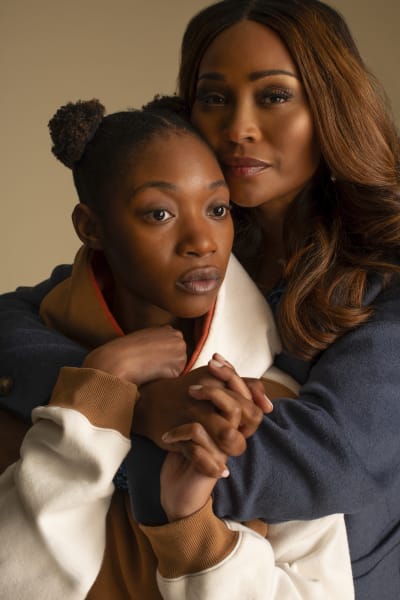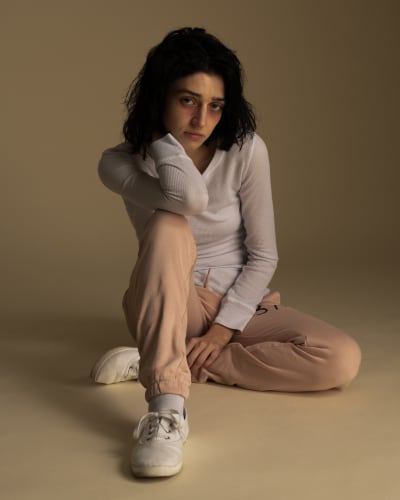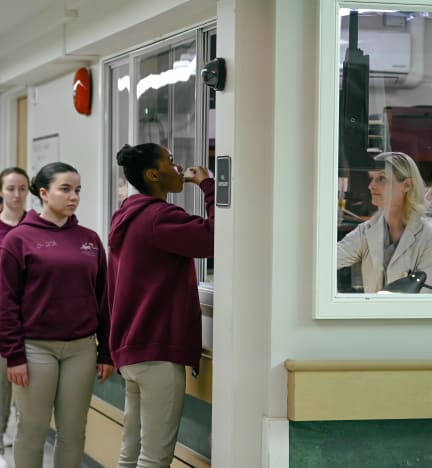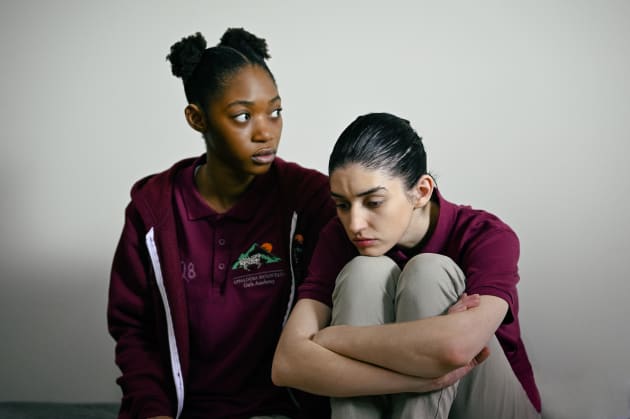
From beginning to end, Cruel Instruction is a phenomenal film with a fantastic cast, helmed by dual talents Kelcey Mawema and Morgan Taylor Campbell.
They are the very core of this film and the heart and soul. Cruel Instruction struck gold with the effortless chemistry between the two, something that only elevated a powerful, provocative, yet alarming film that will sit with you well after the credits roll.
Kayla’s journey is a frustrating one. As someone familiar with the pitfalls a child will fall through when they suffer learning disabilities, thanks to experiences with siblings, one’s heart ached for Kayla.
Not only was she facing bullying at school, but she went through extended periods feeling as if she was stupid because of her undiagnosed dyslexia. Kayla was proof of how a child can slip through the cracks of an education system.
Mawema’s portrayal of Kayla’s anguish, from her battles with dyslexia to her sexual identity issues and her anxiety and PTSD, were all so spot on and well done. She captured all the little nuances of the above with her physical performance.
Worst yet, she wasn’t getting the support she needed at home either.
Real Housewives of Atlanta alum Cynthia Bailey played her mother. While things turned around by the end, it was disappointing how little Kayla’s mother listened to her and the frustrating way she allowed her husband to take the lead in dismissing Kayla and shipping her off to this residential treatment program.
Kayla didn’t need some course correction or reform; the girl needed the proper tools and an I.E.P. that suited her learning style. Ironically, despite the horrors of that unspeakable place they sent her to, it was there where she got the official diagnosis she needed.
She also found some of the things she needed and desired. It’s disturbing on its own that she had to find any of those things there at all.
I loved seeing her fall in love while in this terrible place. Of course, even that got steeped in trauma when Connie tried to discipline the gay out of her, hiding behind the cult-like religious indoctrination that oozed throughout the film.
All you could think about was how this moment where Kayla came to grips with herself, what should be a period where she can come into her own as a queer woman, will forever be tied to negativity and “wrongness” because of Connie.
It’ll take years to work through the level of trauma and negative associations to love, especially queer love, because Connie or some of the other girls suggested that her being queer was wrong.
Amid all the darkness of this film, there was beauty in seeing the lifelong bond that Kayla and Amanda formed. It was a friendship born out of a mutual trauma, but they became so inextricably linked, and they brought out the very best in one another.
Throughout the film, nothing was more powerful than their love for each other and how far they were willing to go for one another. It’s not hyperbolic to point out that they quite literally saved each other.
In by far the film’s most shocking, bone-chilling scene, Amanda rescues Kayla after a near-successful suicide. And if not for Kayla summoning up the strength and courage, and due to her love and devotion to her best friend, Amanda would’ve died, and they never would’ve gotten out of that awful place.
On the other side of things, we saw Campbell’s Amanda, a prime example of the stigmatization of mental illness. Her mother deemed her Bipolar as something that made her unmanageable, and that’s how Amanda ended up bouncing from one treatment facility to the next.
It was upsetting to see this young woman who felt as if everyone in her life was giving up on her. They treated her like a lost cost, so she internalized that. And it was something that continued when she got to the facility.
The film was filled to the brim with horrific, traumatizing scenes. From the moment the girls had to strip and endure vaginal exams in front of staff members to the allusions to staff members sexually abusing the girls, there were many triggering, despicable aspects.
They also endured all types of physical, verbal, and psychological abuse. It was chilling to see how Ms. Connie managed to break all of these girls down through several tactics that rivaled many of the techniques used on prisoners of war and interrogations. The girls were essentially commodities.
Ms. Connie drugging these girls beyond reason and sharing that they paid kickbacks to harbor these girls for the sole purpose of maxing out insurances and profiting was enraging. It was a reflection of just how interconnected corruption is across many systems.
As satisfying as it was to see Kayla and Amanda get out of that place, it still haunted you by the movie’s end that the rest of those girls did not. Ms. Connie would still do exactly what she’s been doing to thousands of other girls, enabled by a series of workers and the system itself.
The others girls would remain in that hell hole, tearing each other apart to survive and enduring unspeakable things because they didn’t have people who could save them. Kayla and Amanda got out, but new girls soon will replace them.
And that was only one facility; there are hundreds of others. It made the ending bittersweet because of the realism. But it’s that realism that made for a compelling piece, triggering, disturbing, and shocking, yes, but compelling all the same.
Cruel Instruction was a haunting film, deeply uncomfortable but arguably necessary to watch to understand the severity of these programs because awareness breeds action and change.
But it was heavy and dark, and we chatted with Kelcey Mawena about some of the most challenging aspects of the film and her words for the real survivors. Check out the second half of our full interview below!
What were the most challenging scenes to shoot? I’m sure there were so many.
There were quite a few, but the one that shook me for a bit was when my character committed suicide. I obviously knew it would be a lot to swallow, but you don’t know until you do it. That was my first time doing a scene like that onset.
Stan talked about it and said he purposely didn’t want us to do any training for it before or talk too much about it because he thought we needed to get there on our own, which I 100% agree with because I don’t think it would’ve come out the way that it did.
I saw my stunt double on the day, and we went through it, and the stunt director. It was all hands on deck. I was dangling there, and I got to commit to no life in my body, and Morgan came in and was screaming. Right after that, we did that take, I was crying while I was up there, and Morgan was just in a state.
I couldn’t imagine being in that state, and she was still crying after. You could hear a pin drop in that building because everyone was overwhelmed with emotion. It was just so real, and that’s part of the job. You want to make it real; it’s the number one thing you can ask for.
That one definitely hit. But after we did it, it was fine. That one was really dark for me, and I don’t want to speak for Morgan, but she probably would say the same thing.
But after seeing how good everything looked, it made it that much better. It’s such a job to make sure I’m telling these stories the best way that I can. And reading the script, reading the accounts on the BreakingCodeSilence website, it’s very raw and authentic.
Was it challenging to step out of that character when you had scenes that were that heavy? How did you balance it out and add some levity, so you weren’t carrying that?
For me, I don’t know how to explain it. Once I go through a day that’s behind me, out of sight, out of mind, but there’s still a bit of me that’s in Kayla because I want to bring something real the next day.
I have an issue with looking in a mirror, practicing lines and what I want to do constantly because I want to be the best. But with this one, I had to let some of that go.
Morgan and I would talk on the phone a lot and discuss other things. I would come home, and my partner and I would watch Anime; I love Anime. I got to get out of that state for a bit, go to sleep, then come back. It was a bit easier for me to check out because I do it a lot, and it’s part of the job.
What would you have to say to people like Kayla and Amanda who experience things like this?
It sucks because you feel like you’re not being heard, but you speaking up and sharing your secrets is so inspiring, and it takes so much freaking willpower to do that because we know how things like this get buried and looked over.
Please keep speaking up; please keep sharing your stories because people like me, you [Jasmine], and the rest of the people watching this movie follow you, and we listen to and hear you. It’s doing wonders because this is a movement, and it’s so big.
So many people who I talked to before this about the film, my friend and family –they said they heard about it, and I knew a bit about it, but I didn’t know as much until I started doing my research. Knowing that people know about these stories and listen is big.
Know that we’re here to listen and try our best to help elevate your stories because what you went through was horrible. You’re survivors. Thank you for sharing your stories. I’m getting emotional.
Yeah, I get it. It was such an incredible film. And I sincerely hope people watch it. I’m glad that you brought that story to life. It’s hard not to get emotional. Thank you for speaking with me.
Thank you so much, Jasmine. It was lovely speaking with you, and this felt so intimate. I really enjoyed this.
—
Did you enjoy Cruel Instruction? What did you think of the film? Hit the comments below with all of your thoughts.
Jasmine Blu is a senior staff writer for TV Fanatic. Follow her on Twitter.
